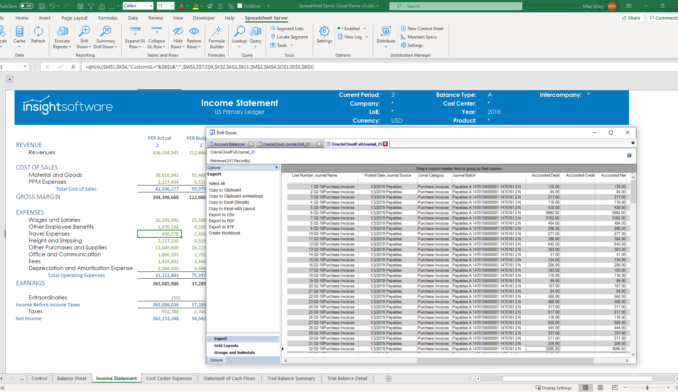5 Critical Financial Decisions During a Business Crisis

As businesses continue to grapple with uncertainty, the role of finance and accounting is more important than ever. While business leaders across the spectrum have undoubtedly addressed their highest priority issues, there are still tough decisions to be made. As the crisis continues and uncertainty remains the norm, CFOs will play an essential role in guiding the decisions that could determine make-or-break outcomes for many businesses.
Cash flow remains a top priority for most CFOs. Stimulus funding in the form of government loans and grants has been a lifeline for many small and mid-sized businesses. Unfortunately, that won’t provide a long-term solution. Let’s look at some of the key decisions that finance and accounting leaders must consider, starting with a few of the key ingredients required for healthy cash flow.
1. Credit and Collections: How Aggressive Should We Be?
When liquidity is tight, as it is now, many businesses will see a growth in accounts receivable and days sales outstanding (DSO). To make matters worse, there is a high likelihood that many small businesses may go bankrupt, leaving their creditors holding the bag. Companies should be keeping a close eye on receivables, and monitoring the health of those accounts in the coming weeks and months.
It is tempting to consider tightening up the credit terms you are extending to your customers. There is a downside to that decision, of course. Customer relationships are critical, and restricting credit at a time like this may be particularly unwelcome. Customer loyalty is always a priority, but it is especially important now. As always, the key is to balance your cash flow requirements with the need to sustain repeat business. That is never an easy decision. It just becomes much harder during a time of crisis.
2. What Are the Right Inventory Levels?
Inventory optimization is a tricky proposition. If you carry too much inventory, there is less cash available for operations. If you have too little, you could experience out-of-stock situations. Customer satisfaction suffers, and you may lose business to the competition. To make matters worse, the demand for various products and services has fluctuated wildly since the coronavirus crisis began. That increases the potential for surpluses of slow-moving inventory and/or out-of-stock scenarios.
Once again, the challenge of maintaining the proper balance is not unique to the current situation; the problem is merely exacerbated by all of the volatility we are experiencing right now.
3. Which Capital Investments Should We Make?
Capital investments are typically planned well in advance. A need is identified, plans are made, a business case is built, and a discussion and approval process ensues. When it first became clear just how disruptive the COVID-19 crisis would be, many of those plans got put on hold. CFOs hit the pause button so they could preserve cash and re-assess the situation.
In many cases, it might now make sense to move forward with those investments. If a project has the potential to drive revenue even in the event of widespread restrictions, then it probably moves up in the list of priorities.
Businesses should look to income diversification as a risk mitigation strategy. If all of your revenue comes from one customer, product, or line of business, then your risk exposure is considerably higher than if you have diversified revenue sources.
Another high-priority category is automation. As remote work suddenly became the norm for millions of people around the world, it quickly became clear that innovative technology would be an immense advantage. Collaboration tools, automation, and flexible IT infrastructure have proven valuable as companies have been forced to make a rapid transition in the way they work.
For everything else, business leaders should strongly consider deferring capital expenditures to preserve cash.
4. In Which Areas Should We Cut Our Losses?
In a recent study of business resilience, experts from McKinsey pointed out the importance of trimming low-performing assets quickly. While it is rarely easy to close a location, discontinue a product, or sell off assets, companies that are willing to make those hard decisions usually emerge stronger as a result. More often, business leaders delay those kinds of choices, prolonging the negative consequences of managing underperforming assets.
5. Which Expenses Should Be Cut?
At a time when virtually every business must focus on running lean, cost-cutting is perhaps the first question that most business leaders ask. Arguably, it is also the most difficult.
There may be some low-hanging fruit, such as the company picnic, attending an industry trade show, or stocking the break room with free snacks for employees. After that, the decisions become harder very quickly.
This is where scenario planning can be an especially valuable tool. A lot has been written about the need for business leaders to work on the business more than they work in the business. In other words, the executive team needs to have a strategic view of the business and the external environment.
Scenario planning prompts business leaders to think about potential situations and events and to explore the ramifications of those events, as well as appropriate responses. While very few people might have foreseen the current situation, nearly everyone now recognizes the value of asking “what if” questions. The resulting discussions may provide some clarity as to where the business should focus its resources over the coming year.
Increasing Your Organization’s Decision-Making Capability
For every decision on this list, it is critical that you have a solid grasp of data and analysis tools to help you better understand the implications of those decisions. Historically, businesses have relied on reports from a variety of different systems, combined with tedious manual processes to aggregate that data into tools such as Excel for analysis. There are a number of problems with this approach, not the least of which is that it is inefficient and prone to errors.
When the economic situation is as volatile as it is now, however, a modern approach to analysis is essential. Real-time access to data has become a must-have requirement if the business is to respond quickly to changes in the environment. If the F&A team must spend hours (or days) copying and pasting data from different systems, then the data is already out of date when managers see it for the first time.
Rapidly changing times also call for different kinds of analysis. Over the years, finance and accounting teams have been reliant on IT experts to extract data or to design and modify reports. In a remote-work situation, that kind of dependency can be especially slow and problematic. If the F&A team is to support an agile response to crisis, front-line finance workers must be empowered to create and modify reports themselves.
While none of the decisions on this list are unique to a crisis situation, the current state of affairs raises the stakes considerably. Strong analytic capabilities will be the differentiator for many businesses as they navigate through this crisis.
Ensure business continuity during the COVID-19 crisis with our resource center.










